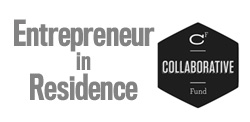The Reason Silicon Valley Hasn't Built a Good Health App
Homogenous teams of innovators make products for people just like them. And that's a problem.
Many great innovators build what they know, for who they know. Aaron Sorkin caricatured this concept with his treatment of the Facebook story: Mark Zuckerberg (Jesse Eisenberg) built an online social network drawing from his own experiences and social network in real life. With consumer web products, given how young the industry is, domain expertise rarely refers to years of experience. An expert might be someone who has loved internet technology since childhood, tinkering with Javascript and LED displays after school. More often than not, a consumer web entrepreneur identifies pain points that he wants to solve as a user first. Technophiles, founders, and early adopters are all drawn from the same pool, often by design.
Over the past couple of years, some of these entrepreneurs have begun building products focused on the quantified self. A thesis for the quantified self goes as follows: a modern young professional likely knows his Twitter follower number, Facebook friend count, as well as the market cap, IPO date, and vital data of a half-dozen companies in his industry. But if you ask for his resting heart rate, genetic disease markers, blood pressure, or body mass index, the chance that he knows more than 2 out of 4 of those is vanishingly small. Technology is the answer to this problem. Today, the pedometer, imagined 400 years ago by Leonardo Da Vinci and first developed in 1965, has evolved far beyond a "step counter" and into a suite of full-service health tracking devices.
In 2008, Gary Wolf co-founded a group called the Quantified Self, a "place for people interested in self-tracking to gather, share knowledge and experiences, and discover resources. The movement fashioned itself a descendant of the personal computer movement of the 1980s. Now the idea of the quantified self has spread beyond Wolf's circle. We see it in consumer products like the Jawbone UP, Fitbit, and Nike+ Fuelband, whose technology measures individuals daily movements and reports relevant health data. The iPhone and other mobile devices come stacked with Bluetooth, gyroscope, accelerometer, and GPS capabilities. They have all the hardware necessary to gather data, record your vitals and with accompanying software tracks (and hold you accountable for) your physical health. Indeed, distributed computing, the rise of mobile technology, and social networks that are reaching critical mass worldwide have laid fertile ground for a revolution in mobile health. But there is a problem.
According to research at the John D. And Catherine MacArthur Foundation, "a large body of evidence indicates that socioeconomic status is a strong predictor of health. Better health is associated with having more income, more years of education, and a more prestigious job, as well as living in neighborhoods where a higher percentage of residents have higher incomes and more education." The South has the highest obesity prevalence, followed by the Midwest, Northeast, and the West. Among predominant American races, Blacks have the highest rate of obesity, followed by Mexican Americans, other Hispanics, and finally Whites. It seems as though, if innovators are looking to build healthcare solutions, the target demographic is not the technophiles early-adopters of The Social Network, who are predominantly middle- to upper-middle class whites and Asians living on the coasts.
Conventional wisdom of social consumer internet products says, like Facebook, build for your community first, and the rest will follow. Indeed, the early-adopter elite often have more spending power as well, and so many consumer web products are aligned with the mentality of 'innovating for the elite'. But when it comes to healthcare innovation, this wisdom fails.
Anecdotal evidence suggests the overlap between those who shop at farmer's markets, wear Lululemon Athletica, frequent yoga studios, and bike to work and those early adopters of Fitbit, Runkeeper, and Jawbone UP is very high. The quantified self, as currently defined, may be about signalling health consciousness among an already highly health conscious population, rather than changing behavior. And as such the quantified self has an upper limit as a feature, or an addition, not as product unto itself. It is an optimization, rather than a revolution. Innovating for the elite, then, misses the mark.
Bloggers, venture capitalists, and entrepreneurs often speak about diversity in the start-up community. Women 2.0 and Ladies Learning Code are drawing much-needed attention to the gender imbalance in founding teams, and in the start-up community more generally. NewMe Accelerator and DreamIt Access support minority entrepreneurs across America, addressing the gross underrepresentation of blacks and latinos on high-technology founding teams. This matters. And not only because America is the land of opportunity, or because of a philosophical notion of fairness.
It matters for scaling consumer business. Many great innovators build what they know, for whom they know. The Mark Zuckerberg of the Social Network was a spurned ex and excluded Freshman nerd. His product reflected his social context and background deeply -- it allowed him to meet new people and access the lives of the elite. The addressable market for that insight, and resulting product was, of course, massive. Health and wellness issues are no less encompassing than romance and status. But the demographics of an audience of Lululemon wearers, yoga-practitioners, and vegans is a very different market segment than the obese, the chronically ill, and those with limited access to health education resources.
As we address increasingly complex social problems like healthcare, we need to be more creative about solutions that will maximize the addressable market. Obesity alone costs the United States more than $150 billion in lost productivity a year. That's a huge market, and it skews heavily to lower income populations. We need a tool to change behavior across all demographics, and self-tracking products currently aren't doing it. Moreover, the demographics in the United States are rapidly changing: Tristan Walker, VP of Business Development at Foursquare and Silicon Valley diversity advocate, recently pointed out to me that, "By the year 2040, racial minorities will account for the majority of the United States population." The quantified self and accompanying mobile health revolution needs to puncture markets which are usually invited last to the party. If entrepreneurs in this space are serious about making a difference, and about staying relevant to an evolving population, they need to invite these demographics first. To wit, we need to innovate on our innovation.
And to do that, we need greater diversity among those very entrepreneurs. After all, we build what we know. Innovate for a population who needs it -- and there's plenty of money to be made there, too. This will require non-traditional business approaches, and willingness on the part of entrepreneurs and innovators to work directly with incumbents, be those pharmaceutical companies, health insurance companies, hospitals, or government agencies to inject productivity into the system through technology. They will make margins on these productivity gains (overall, the direct costs of inactivity and obesity account for some 9.4% of the national health care expenditures in the United States totaling almost $10 billion) and have deeper and more positive impact on society. With all due and utmost respect to the coastal elites, that's what'll get me excited about the quantified self.
Images: 1. Konstantin Chagin; 2. Dmitriy Shironosov; 3. Yuri Arcurs, all via Shutterstock.



